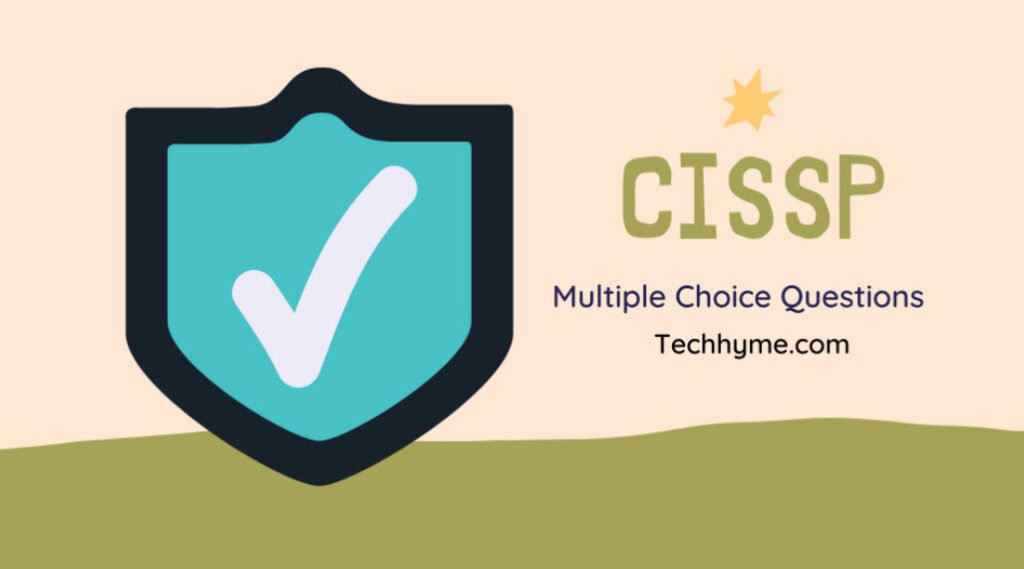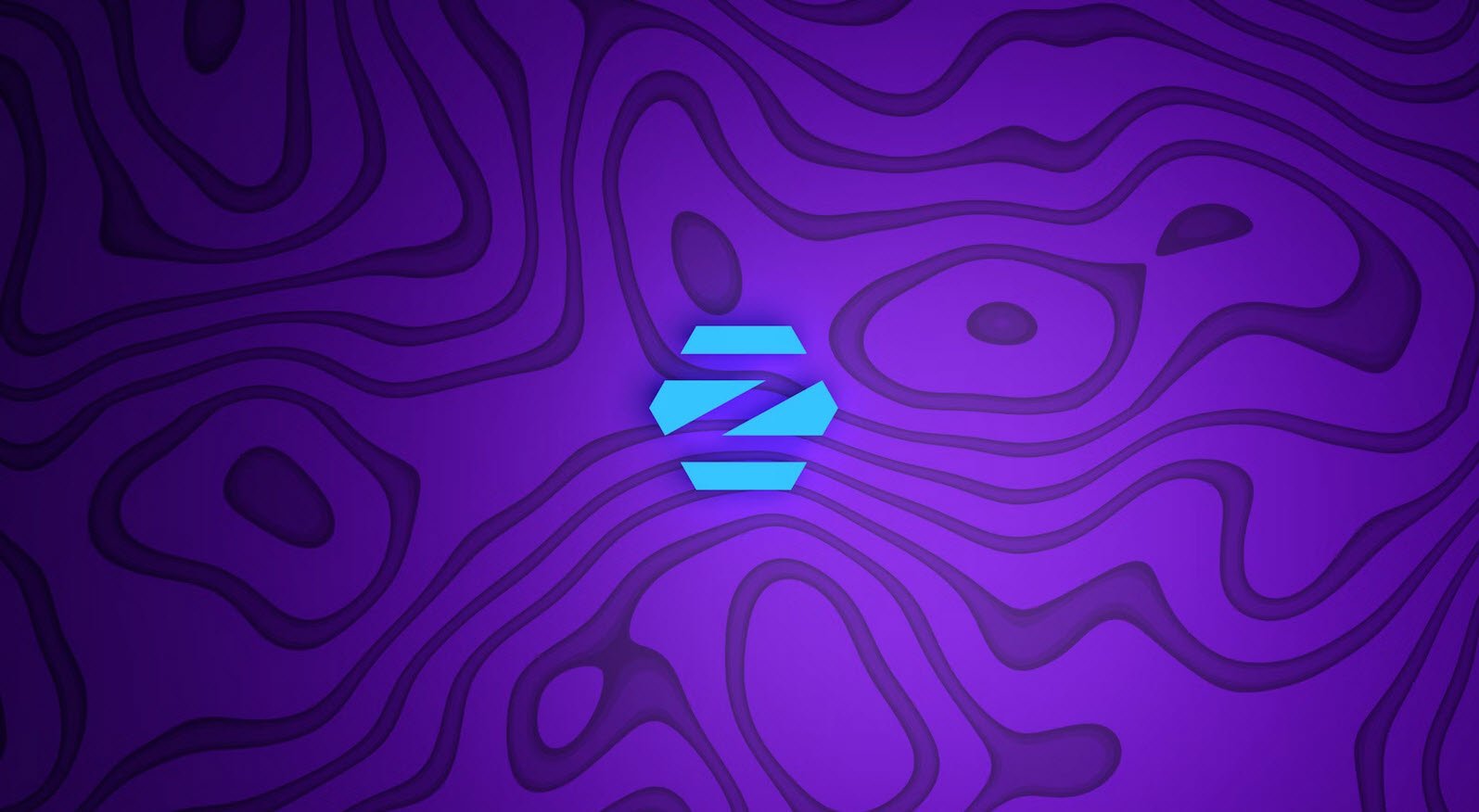
This article offers you a solid foundation for the Certified Information Systems Security Professional (CISSP) exam. This article is designed for readers and students who want to study for the CISSP certification exam.
The CISSP exam is governed by the International Information Systems Security Certification Consortium, Inc. (ISC)2 organization.
- CISSP – MCQ – Security Management Practices
- CISSP – MCQ – Access Control Systems
- CISSP – MCQ – Telecommunications and Network Security
- CISSP – MCQ – Cryptography
- CISSP – MCQ – Security Architecture and models
- CISSP – MCQ – Operations Security
- CISSP – MCQ – Applications and Systems Development
- CISSP – MCQ – Business Continuity Planning and Disaster Recovery Planning
- CISSP – MCQ – Law, Investigation and Ethics
- CISSP – MCQ – Physical Security
- CISSP – MCQ – Systems Security Engineering
- CISSP – MCQ – Certification and Accreditation
- CISSP – MCQ – Technical Management
- CISSP – MCQ – U.S. Government Information Assurance (IA) Regulations
(ISC)2 is a global not-for-profit organization. It has four primary mission goals:
- Maintain the Common Body of Knowledge for the field of information systems security
- Provide certification for information systems security professionals and practitioners
- Conduct certification training and administer the certification exams
- Oversee the ongoing accreditation of qualified certification candidates through continued education
In this article, all the questions are related to “Access Control Systems” and are as follows:
1) The secure Hash Algorithm (SHA) is specified in the:
- Data Encryption Standard
- Digital Signature Standard
- Digital Encryption Standard
- Advanced Encryption Standard
2) What does Secure Sockets Layer (SSL)/ Transaction Security Layer (TSL) do?
- Implements confidentiality, authentication, and integrity above the Transport Layer
- Implements confidentiality, authentication, and integrity below the Transport Layer
- Implements only confidentiality above the Transport Layer
- Implements only confidentiality below the Transport Layer
3) What are MD4 and MD5?
- Symmetric encryption algorithms
- Asymmetric encryption algorithms
- Hashing algorithms
- Digital certificates
4) Elliptic curves, which are applied to public key cryptography, employ modular exponentiation that characterizes the:
- Elliptic curve discrete logarithm problem
- Prime factors of very large numbers
- Elliptic curve modular addition
- Knapsack problem
5) Which algorithm is used in the clipper chip?
- IDEA
- DES
- SKIPJACK
- 3DES
6) The hashing algorithm in the Digital Signature Standard (DSS) generate a message digest of :
- 120 bits
- 160 bits
- 56 bits
- 130 bits
7) The protocol of the Wireless Application Protocol (WAP), which performs functions similar to SSL in the TCP/IP protocol, is called the:
- Wireless Application Environment (WAE)
- Wireless Session Protocol (WSP)
- Wireless Transaction Protocol (WTP)
- Wireless Transport Layer Security Protocol (WTLS)
8) A security Parameter Index (SPI) and the identity of the security protocol (AH or ESP) are the components of:
- SSL
- IPSec
- S-HTTP
- SSH-1
9) When two different keys encrypt a plaintext message into the same ciphertext, this situation is known as:
- Public key cryptography
- Cryptanalysis
- Key clustering
- Hashing
10) What is the result of the Exclusive or operation, 1XOR 0?
- 1
- 0
- Indeterminate
- 10
11) A block cipher:
- Encrypts by operating on a continuous data stream
- Is an asymmetric key algorithm
- Converts variable-length plaintext into fixed-length ciphertext
- Breaks a message into fixed-length ciphertext units for encryption
11) In most security protocols that support confidentiality, Integrity, and authentication:
- Public key cryptography is used to create digital signatures.
- Private key cryptography is used to create digital signatures.
- DES is used to create digital signatures.
- Digital signatures are not implemented.
12) Which of the following is an example of a symmetric key algorithm?
- Rijndael
- RSA
- Diffie-Hellman
- Knapsack
13) Which of the following is a problem with symmetric key encryption?
- It is slower than asymmetric key encryption.
- Most algorithms are kept proprietary.
- Work factor is not a function of the key size.
- It provides secure distribution of the secret key.
14) Which of the following is an example of an asymmetric key algorithm?
- IDEA
- DES
- 3DES
- ELLIPTIC CURVE
15) In public key cryptography:
- Only the private key can encrypt, and only the public key can decrypt.
- Only the public key can encrypt, and only the private key can decrypt.
- The public key is used to encrypt and decrypt.
- If the public key encrypts, only the private key can decrypt.
16) In a hybrid cryptographic system, usually:
- Public key cryptography is used for the encryption of the message.
- Private key cryptography is used for the encryption of the message.
- Neither public key nor private key cryptography is used.
- Digital certificates cannot be used.
17) What is the block length of the Rijndael cipher?
- 64 bits
- 128 bits
- Variable
- 256 bits
18) A polyalphabetic cipher is also known as:
- One-time pad
- Vigenere cipher
- Steganography
- Vernam cipher
19) The classic Caesar cipher is a:
- Polyalphabetic cipher
- Monoalphabetic cipher
- Transposition cipher
- Code group
20) In steganography:
- Private key algorithms are used.
- Public key algorithms are used.
- Both public and private key algorithms are used.
- The fact that the message exists is not known.
21) What is the key length of the Rijndael Block Cipher?
- 56 or 64 bits
- 512 bits
- 128, 192, or 256 bits
- 512 or 1024 bits
22) In a block cipher, diffusion:
- Conceals the connection between the ciphertext and plaintext
- Spreads the influence of a plaintext character over many ciphertext characters
- Is usually implemented by non-linear S-boxes
- Cannot be accomplished
23) The NIST Advanced Encryption Standard uses the:
- 3 DES algorithm
- Rijndael algorithm
- DES algorithm
- IDEA algorithm
24) The modes of DES do NOT include:
- Electronic Code Book
- Cipher Block Chaining
- Variable Block Feedback
- Output Feedback
25) Which of the following is true?
- The work factor of triple DES is the same as for double DES.
- The work factor of single DES is the same as for triple DES.
- The work factor of double DES is the same as for single DES.
- No successful attacks have been reported against double DES.
26) The Rijndael Cipher employs a round transformation that is comprised of three layers of distinct, invertible transformations. These transformations are also defined as uniform, which means that every bit of the state is treated the same. Which of the following is NOT one of these layers?
- The non-linear layer, which is the parallel application of S-boxes that have the optimum worst-case non-linearity properties
- The linear mixing layer, which provides a guarantee of the high diffusion of multiple rounds
- The key addition layer, which is an Exclusive OR of the Round key to intermediate State
- The key inversion layer, which provides confusion through the multiple rounds
27) The Escrowed Encryption Standard describes the:
- Rijndael Cipher
- Clipper chip
- Fair Public Key cryptosystem
- Digital certificates
28) Theoretically, quantum computing offers the possibility of factoring the products of large prime numbers and calculating discreet logarithms in polynomial time. These calculations can be accomplished in such a compressed time frame because:
- Information can be transformed into quantum light waves that travel through fiber-optic channels. Computations can be performed on the associated data by passing the light waves through various types of optical filters and solid-state materials with varying indices of refraction, thus drastically increasing the throughput over conventional computations.
- A quantum bit in a quantum computer is actually a linear superposition of both the one and zero states and, therefore, can theoretically represent both values in parallel. This phenomenon allows computation that usually takes exponential time to be accomplished in polynomial time because different values of the binary pattern of the solution can be calculated simultaneously.
- A quantum computer takes advantage of quantum tunneling in molecular scale transistors. This mode permits ultra high-speed switching to take place, thus exponentially increasing the speed of computations.
- A quantum computer exploits the time-space relationship that changes as particles approach the speed of light. At that interface, the resistance of conducting materials effectively is zero and exponential speed computations are possible.
29) Which of the following characteristics does a one-time pad have if used properly?
- It can be used more than once.
- The key does not have to be random.
- It is unbreakable.
- The key has to be of greater length than the message to be encrypted.
30) The DES key is:
- 128 bits
- 64 bits
- 56 bits
- 512 bits
31) In a digitally-signed message transmission using a hash function:
- The message digest is encrypted in the private key of the sender.
- The message digest is encrypted in the public key of the sender.
- The message is encrypted in the private key of the sender.
- The message is encrypted in the public key of the sender.
32) The strength of RSA public key encryption is based on the:
- Difficulty in finding logarithms in a finite field
- Difficulty of multiplying two large prime numbers
- Fact that only one key is used
- Difficulty in finding the prime factors of very large numbers
33) Elliptic curve cryptosystems:
- Have a higher strength per bit than an RSA
- Have a lower strength per bit than an RSA
- Cannot be used to implement digital signatures
- Cannot be used to implement encryption
34) Which of the following is NOT a fundamental component of Identity-Based Encryption (IBE)?
- Bi-linear mapping
- Weil Pairing
- Multiplication of points on an elliptic curve
- A symmetrical session key








